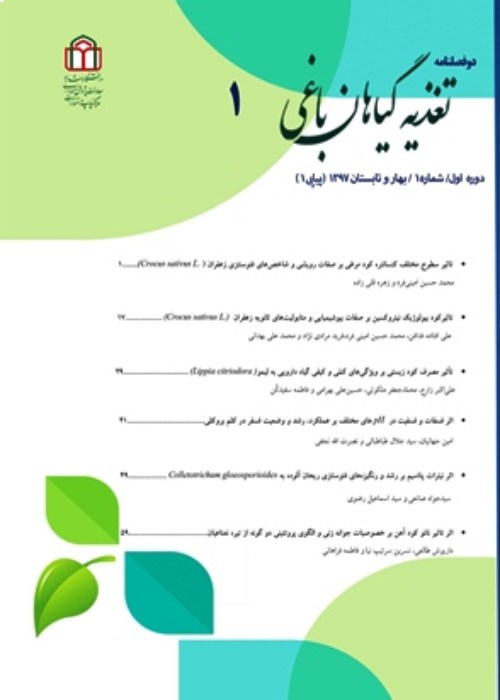Improvement of the quantitative and qualitative properties of spinach with the use of selenium and green selenium nanoparticles
Leafy vegetables are widely consumed in many countries due to their high nutritional value. However, leafy vegetables are the primary source of nitrate accumulation, and therefore, daily consumption of nitrate-containing vegetables can cause many problems for human health. Spinach (Spinacia oleraceae L.) is one of the leafy vegetables that accumulate nitrate. Many nutrients are involved in reducing nitrate accumulation and metabolic and physiological processes in plants. Among the elements, selenium, which is known as a beneficial element, at low concentrations, it can have beneficial effects on plant metabolism as well as reducing nitrate accumulation.
This study was conducted to investigate the effect of selenium and selenium green nanoparticles on nitrate accumulation in spinach in a randomized complete block design with seven treatments and seven replications. Treatments included sodium selenite (Na2SeO3) at concentrations of 1, 2, and 4 mg l-1 and green nanoparticles of sodium selenite (Se NPs) at concentrations of 1, 2, and 4 mg l-1 and control (without the use of selenium), which used as foliar sprays.
The results showed that most of the nutrient treatments, especially the concentration of 4 mg l-1 sodium selenite and 1 mg l-1 Se NPs, significantly increased the fresh and dry weight of the plant, chlorophyll a, chlorophyll b, total chlorophyll, and the activity of nitrate reductase and decreased the concentration of nitrate. In most of the nutrient treatments, the levels of phosphorus, potassium, and selenium were higher than the control. In contrast, the control plants showed significantly more Zn than the plants treated with different selenium levels.
As demonstrated by the results of current research, foliar application of Se, especially Se NPs, have a high potential for obtaining better quantity and reducing the nitrate accumulation in spinach.


